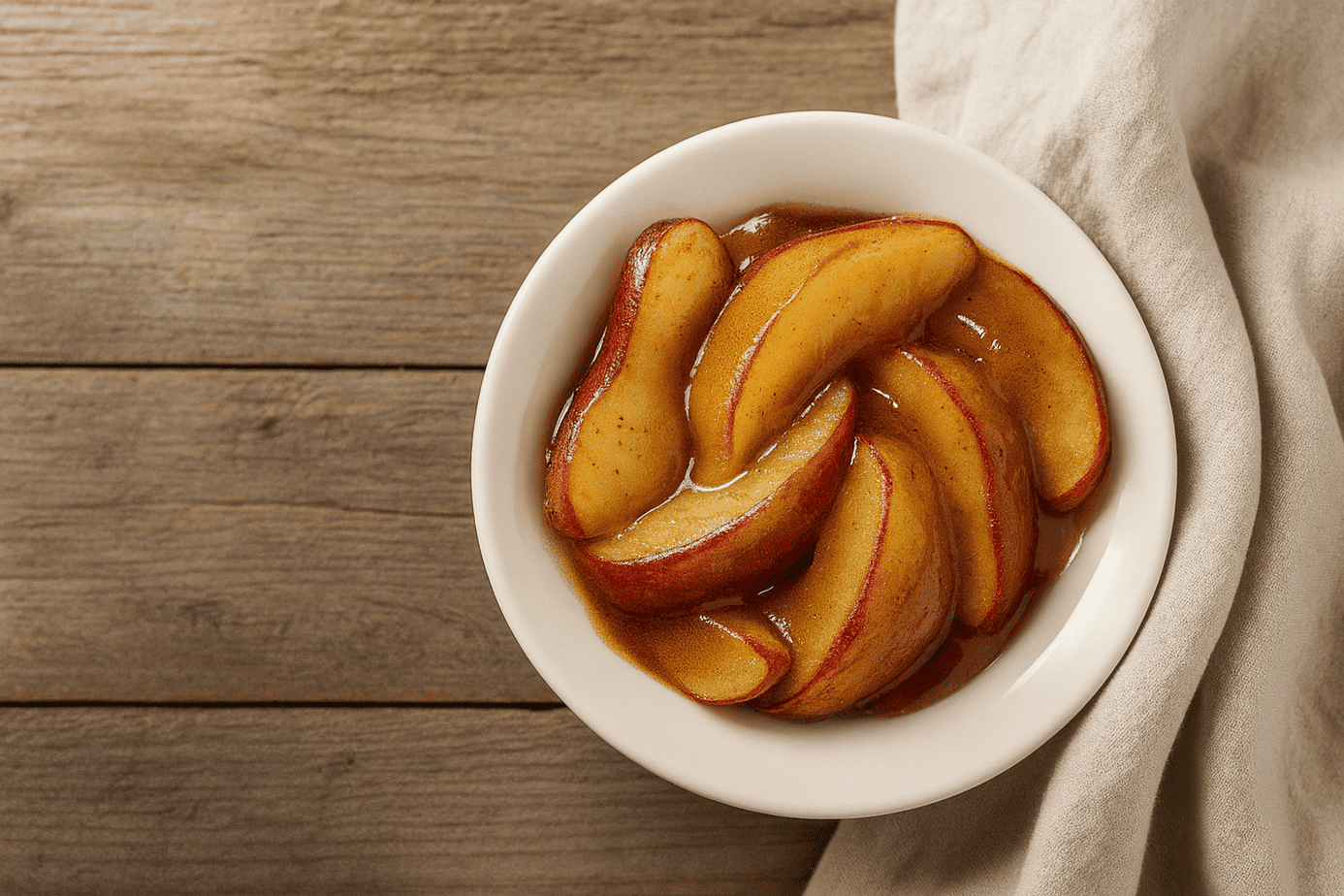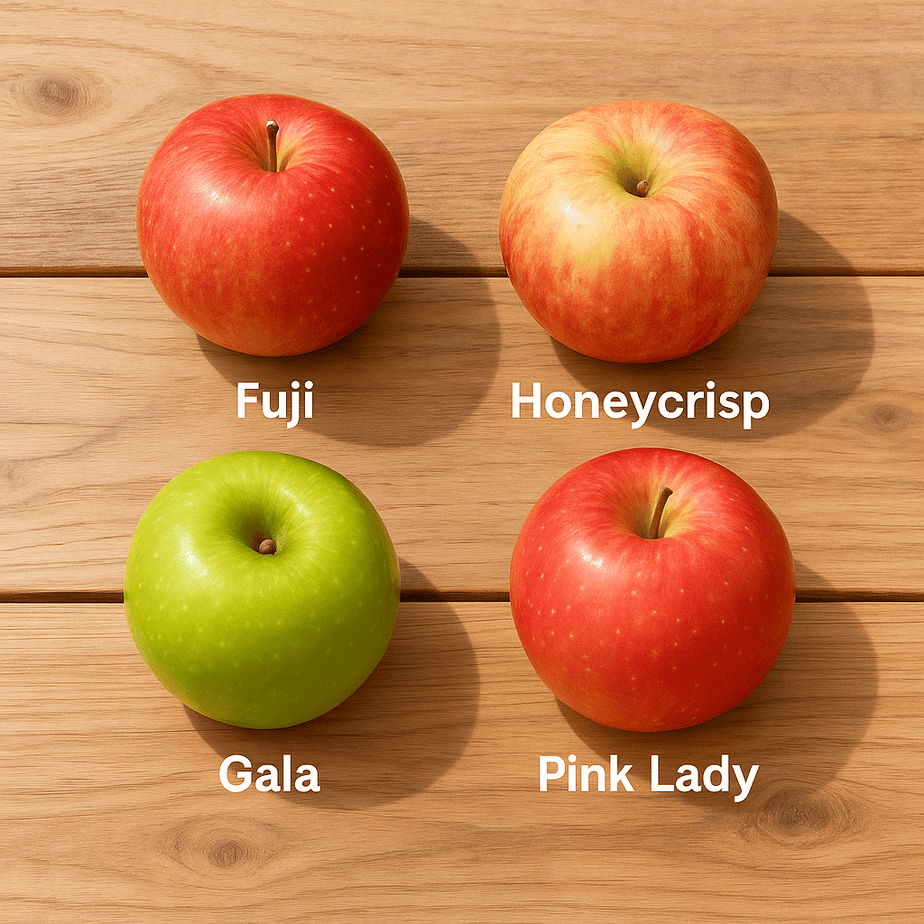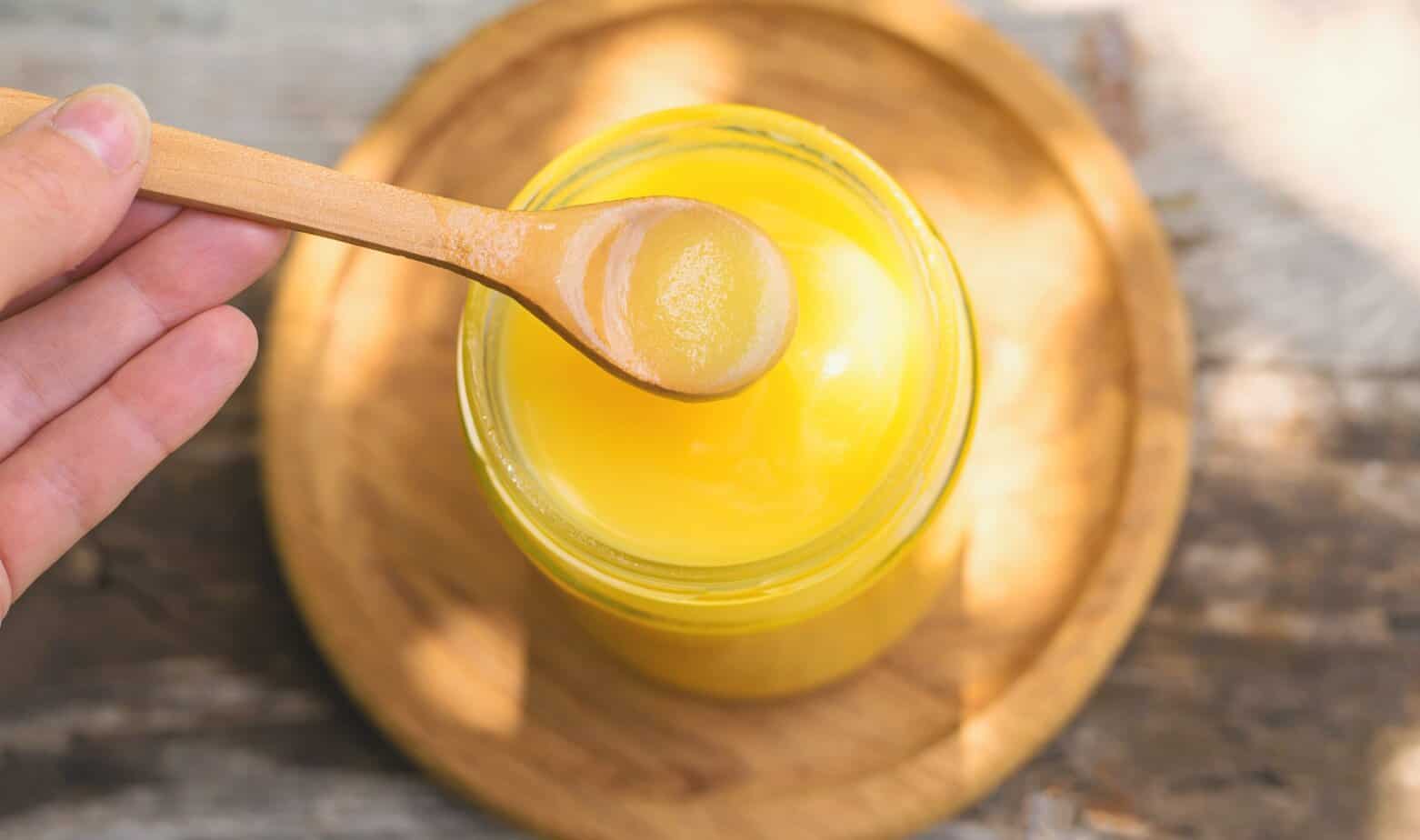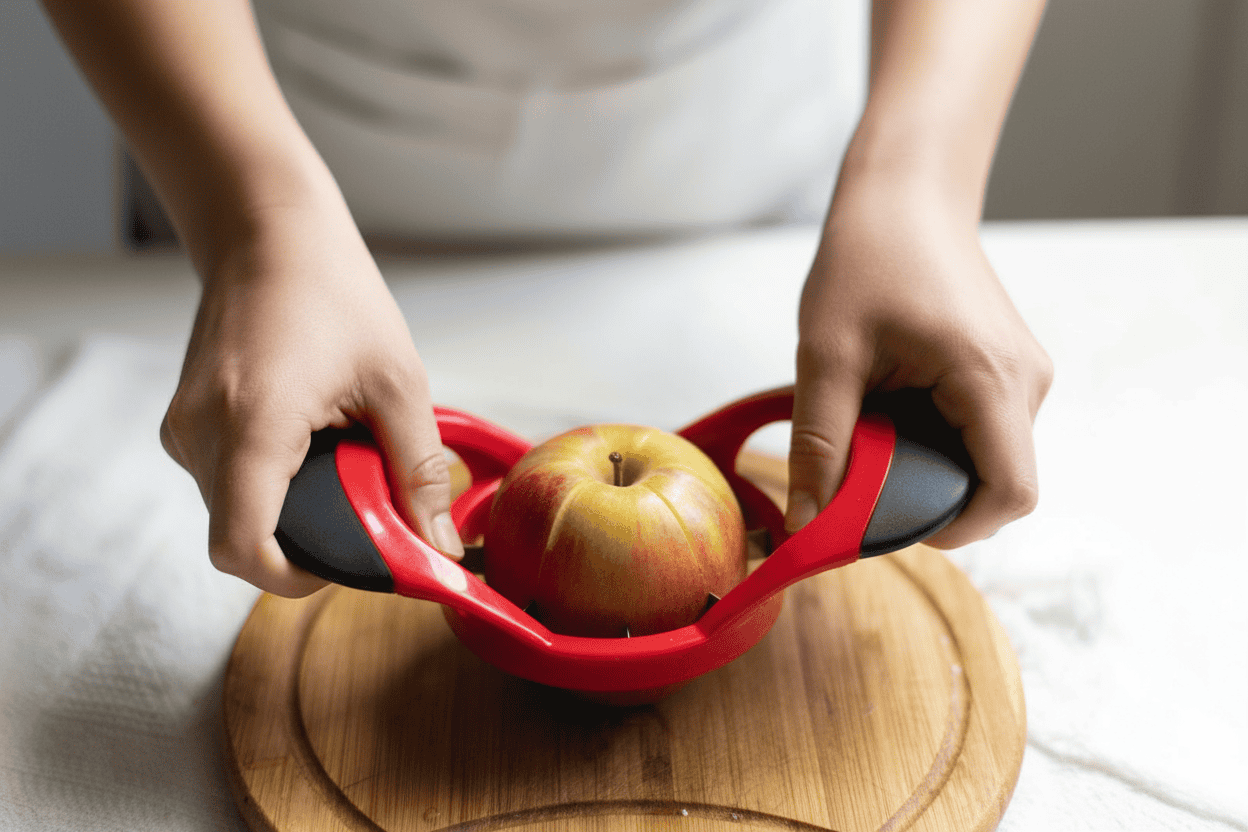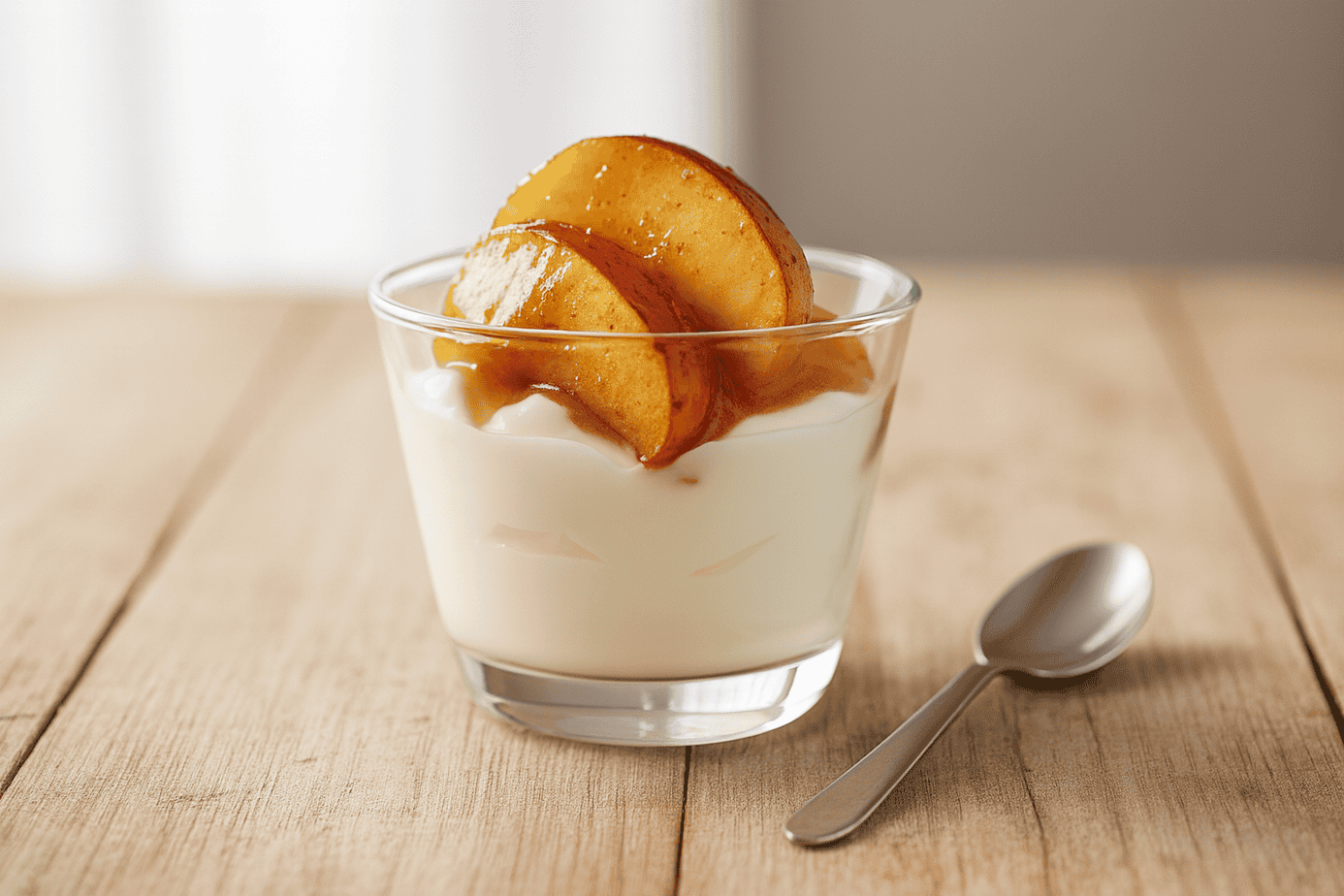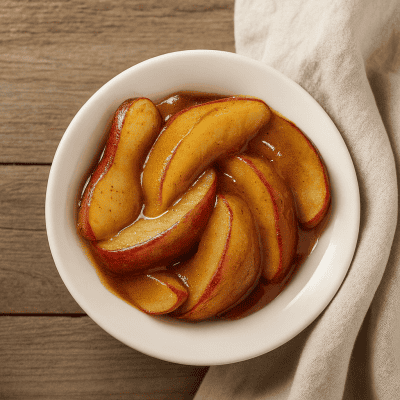It’s fall and apple season—a perfect time for comfort food made healthier! If you’ve ever enjoyed the classic Cracker Barrel fried apples, this Slow Cooker Honey and Cinnamon Apples recipe is just as delicious, but healthier. It uses ghee and is naturally gluten-free and refined sugar-free. These honey cinnamon apples remind me of the apple dumplings my mother used to make, and my father-in-law loved them. I can attest the leftovers are great straight from the fridge but can be used in multiple other ways.
The Science on Apples—In Brief
You’ve likely heard the saying, “An apple a day keeps the doctor away.” It turns out, there’s science behind the saying. A large 2025 observational study found that eating whole apples three to six times per week was associated with a 48% lower risk of death, especially in people with high blood pressure. In contrast, apple juice and applesauce didn’t offer the same benefit. In fact, frequent intake showed a slight increase in risk.
Whole Apples vs. Processed Apples
This doesn’t necessarily mean unsweetened homemade applesauce or stewed apples are bad. They just don’t deliver the same level of benefit as eating whole, peel-on apples. They can still fit beautifully into a balanced diet when enjoyed occasionally, and 1/4 cup of applesauce can replace one egg in baked goods.
With apple juice, the fiber is removed entirely, and many commercial juices and sauces include added sugar or concentrated sweeteners, leading to higher blood-sugar responses. The study didn’t clearly separate sweetened from unsweetened products. However, much of the commercially made applesauce in the U.S. may be sweetened, which could partly explain the difference.
Why the Peel Matters
Apples are packed with fiber, vitamin C, and plant compounds called polyphenols, which support gut and heart health, regulate blood sugar, and help balance cholesterol levels. Much of this protective power comes from pectin, a soluble fiber that forms a gentle gel in the gut, helping remove excess cholesterol while feeding beneficial bacteria.
However, most of an apple’s antioxidants and a large share of both pectin and insoluble fiber live in or just under the peel. Thus, when apples are peeled, as in most applesauce and juice, these valuable nutrients are greatly reduced.
Processing adds further losses. Pureeing breaks cell walls, exposing polyphenols to oxygen via polyphenol oxidase, which uses up antioxidants. Blending incorporates even more oxygen, and heat or pasteurization further degrades delicate polyphenols, pectin, and vitamin C. By the time a whole apple becomes sauce or juice, much of its original power is gone.
Apple Wisdom for Your Table
Because this was an observational study, it shows correlation, not causation. People who eat more applesauce or juice may also consume more processed foods overall. Still, the takeaway is clear: for the greatest health benefit, eat whole apples with the peel on.
For this slow-cooker apple recipe—best enjoyed as a special treat—varieties such as Fuji, Honeycrisp, Gala, or Pink Lady work beautifully. Their thinner skins soften well during cooking, adding nutrients without compromising texture.
Interestingly, the study found no additional benefits above six apples per week, so you can give yourself (and your apples) a rest on the Lord’s Day. As with all good things, a rhythm of balance, gratitude, and enjoyment seems to be the healthiest way to live.
Other Ingredients in Slow Cooker Honey and Cinnamon Apples
Arrowroot Powder:
Arrowroot is a naturally grain-free and gluten-free thickener that’s gentle on sensitive digestions. It creates a clear, glossy sauce without the starchy taste of some thickeners. When cooled, it can provide a bit of resistant starch, feeding beneficial gut bacteria. However, served hot, it’s mostly quickly digested. If you don’t have arrowroot powder, tapioca starch is a suitable substitute and yields a similar silky finish.
Learn more in this post: Choosing the Right Gluten-Free Thickener for Gut Health.
Coconut Sugar:
Coconut sugar (aka coconut palm sugar) tastes similar to brown sugar, but it is less refined and generally causes a slower rise in blood sugar. It contains small amounts of minerals and antioxidants, though it’s still a form of sugar and best enjoyed sparingly.
Raw, Local Honey:
Raw honey contains natural enzymes, trace minerals, and polyphenols that support gut health and immunity. Heating destroys most enzymes, though antioxidant and mineral benefits remain. Choosing local honey may help with seasonal allergies because it contains trace amounts of pollen from plants growing near you. Do not give honey to infants under 12 months.
Collagen Peptides:
Collagen peptides add an invisible boost to your apples by supplying easily absorbed amino acids that support healthy hair, skin, nails, and joints. Collagen is flavorless, dissolves smoothly, and can help promote strong connective tissue and gut barrier health. Unlike gelatin, it won’t thicken or change the texture—just gently upgrade the nutritional profile of your cozy apple treat.
Cinnamon:
Cinnamon, especially Ceylon type, is loaded with antioxidant polyphenols. Recent research indicates consistent cinnamon intake may benefit blood sugar, cholesterol, blood pressure, and inflammation, making it an ideal cozy spice for any “healthified” treat.
Ghee:
Ghee is similar to clarified butter, but it’s cooked a bit longer, creating its signature nutty flavor. This process also reduces lactose and casein, making it easier for some people to tolerate. It supplies healthy fats and fat-soluble vitamins (A, E, and K). Plus, it contains some butyric acid (butyrate), a short-chain fatty acid that supports a healthy gut barrier, nourishes cells lining the colon, and helps reduce body-wide inflammation. In this recipe, ghee adds both silkiness and depth of flavor, perfectly complementing the apples and warm spices.
Want to try making your own ghee? Check out my post on How to Make Ghee at Home.
Fresh Lemon Juice:
Lemon juice adds a bright flavor and vitamin C, supporting immunity and digestive health. Its acidity slows apple browning and helps protect sensitive polyphenols during cooking. Research also shows that acids like lemon juice can lower and delay post-meal blood sugar spikes by slowing starch and sugar digestion, offering gentle support for stable energy.
Vanilla Extract:
Pure vanilla brings more than aroma. Its key compound, vanillin, has antioxidant activity and may help calm oxidative stress. Early studies, including some human sensory work, suggest vanilla can ease stress and gently lift mood. The cozy flavor alone is enough to make you smile. Choose pure extract for taste and potential benefits.
How to Make Slow Cooker Honey and Cinnamon Apples
- Make an arrowroot slurry directly in the slow cooker.
- Add sliced apples and toss with coconut sugar, honey, collagen, and cinnamon.
- Stir in melted ghee, lemon juice, and vanilla.
- Cover and cook until apples are fork-tender.
- Serve warm or chilled.
Delicious Ways to Use Your Slow Cooker Apples
Slow Cooker Honey and Cinnamon Apples aren’t just a dessert; they’re a versatile addition to your fall and winter kitchen. Here are easy and creative ways to enjoy “nextovers”:
-
- Apple Pie or Tart Filling: Use as a ready-made filling for pies or rustic tarts. Simply layer into a crust and bake for a quick, homemade treat.
- Apple Crisp or Crumble: Spoon the apples into a baking dish, top with oats, nuts, coconut, and a little coconut sugar, and bake until golden and bubbling.
- Pancakes or Waffles: Fold apples into pancake or waffle batter, or pile warm apples on top for a cozy morning flavor boost.
- Oatmeal, Yogurt, or Chia Pudding: Spoon over warm oatmeal, creamy yogurt, or chia pudding for a naturally sweet, fiber-rich topping.
- Apple Smoothies: Blend chilled apples with almond milk, a sprinkle of cinnamon, and ice for a refreshing fall smoothie.
- Muffins or Quick Bread: Finely dice some of the apples (1/2 cup for 12 muffins or one 9×5-inch loaf) and fold only the apples —not the sauce—into the batter. You may need to increase baking time a few minutes.
- Savory Pairing: Serve the apples as a surprising, delicious topping for pork roast or chops.
- Freeze for Later: Portion into freezer containers to preserve fall flavor for quick breakfasts and desserts anytime—just thaw and heat gently.
Let your creativity shine and enjoy these apples wherever comfort, nutrition, and a touch of homemade sweetness are welcome—from breakfast parfaits to dinner sides and cozy desserts.
Ready to get in the kitchen? Scroll down for the full recipe. Once you’ve tried it, share how you repurposed your “nextovers.” Did you use them in a crisp, on pancakes, or invent something new? I’d love to hear your ideas in the comments!
Slow Cooker Honey and Cinnamon Apples
Ingredients
- 2 tablespoons arrowroot powder
- 2 tablespoons filtered water
- 3 to 4 pounds apples, cored and sliced into thin wedges (See Note 1)
- 1/4 cup coconut sugar, (coconut palm sugar)
- 1/4 cup raw, local honey (See Note 2)
- 1/4 cup collagen peptides
- 1 teaspoon cinnamon
- 1/4 cup ghee, melted
- 2 teaspoons fresh lemon juice
- 1 teaspoon pure vanilla extract
Instructions
- Put the arrowroot and water in the slow cooker and whisk until thoroughly combined. Add the apple slices and stir to coat.
- Add the coconut sugar, honey, collagen, and cinnamon; stir to mix well.
- Add the ghee, lemon juice, and vanilla. Stir to mix well.
- Cover and cook on high for 2 hours. When cooking time is complete, stir and serve.
Notes
Sources
Sun C, Chen Y, Guan Y, Zeng Y, Li J, Chen L. The influence of different forms of apple products on all-cause mortality in patients with hypertension. Front Nutr. 2025 Jan 24;11:1461196. doi: 10.3389/fnut.2024.1461196. PMID: 39925970; PMCID: PMC11802416.
https://www.frontiersin.org/journals/nutrition/articles/10.3389/fnut.2024.1461196/full
Wang J, An W, Wang Z, Zhao Y, Han B, Tao H, Wang J, Wang X. Vanillin Has Potent Antibacterial, Antioxidant, and Anti-Inflammatory Activities In Vitro and in Mouse Colitis Induced by Multidrug-Resistant Escherichia coli. Antioxidants (Basel). 2024 Dec 17;13(12):1544. doi: 10.3390/antiox13121544. PMID: 39765873; PMCID: PMC11673545.
https://pmc.ncbi.nlm.nih.gov/articles/PMC11673545/
Shoeb A, Chowta M, Pallempati G, Rai A, Singh A. Evaluation of antidepressant activity of vanillin in mice. Indian J Pharmacol. 2013 Mar-Apr;45(2):141-4. doi: 10.4103/0253-7613.108292. PMID: 23716889; PMCID: PMC3660925.
https://pmc.ncbi.nlm.nih.gov/articles/PMC3660925/
Kaur S, Das M. Vanillin: A food additive with multiple biological activities. Trends in Food Science & Technology. 2022;132:56-68. doi:10.1016/j.tifs.2022.02.027.
https://www.sciencedirect.com/science/article/pii/S2772417422000279
